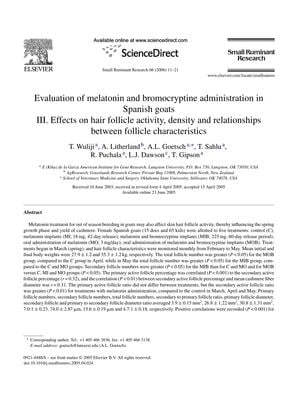Evaluation of Melatonin and Bromocryptine Administration in Spanish Goats
June 2005
in “
Small ruminant research
”

TLDR Melatonin treatment may increase cashmere production in Spanish goats.
In a study conducted on female Spanish goats, including 15 does and 65 kids, researchers evaluated the effects of melatonin and bromocryptine on hair follicle activity and cashmere yield during the spring growth phase. The goats were divided into five groups: a control group, a group with melatonin implants (MI), a group with both melatonin and bromocryptine implants (MIB), a group with oral melatonin (MO), and a group with both oral melatonin and bromocryptine implants (MOB). The study began in March and continued until May, with monthly monitoring of hair follicle characteristics. The results showed that the MOB group had a significantly higher total follicle number in April, and the MIB group had a higher total in May, compared to the control group. Secondary follicle numbers were also higher in the MIB and MOB groups. There was a positive correlation between active follicle percentages and mean cashmere fiber diameter. The secondary active follicle ratio was higher in groups treated with melatonin compared to the control. The study concluded that melatonin treatment could potentially extend the cashmere growth phase and improve cashmere yield in Spanish goats.



